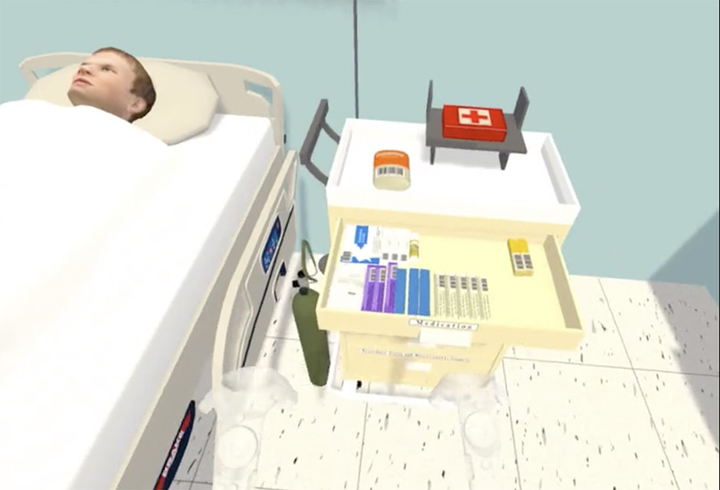
Judging from Back to the Future and The Jetsons, the year 2017 would be filled with flying cars, hover boards, and teleportation docks. Much to our disappointment, we’re not quite there yet. But tech companies like Mindgrub Technologies are working towards making those dreams a reality—virtual reality to be exact.
The Locust Point company, under the leadership of president and CEO Todd Marks, has made it possible for local organizations like Mercy Medical Center, Peabody Conservatory, and Ulman Cancer Fund to revolutionize experiences for both consumers and employees. Using augmented reality, mobile gaming, and wearable technology, Mindgrub has been able to bring intangible ideas to life.
“A lot of the things we are working on are real world experiences,” Marks says. “Virtual and augmented reality can simulate anything.”
So when Mercy was looking for new ways to train its nurses, it was only natural that the hospital turned to Mindgrub for help. With teaching tools and content from the nursing department and the gaming software, the two organizations were able to create an educational game called Epic Quest.
Trainees have to travel through the World of Salus—healthcare in Latin—to complete a series of questions that test their knowledge on various aspects of medicine, like infection control and pain management.
“Using the game cut down on the length of the orientation,” says Stacey Brull Sr., director of research, education, and informatics at Mercy. “What used to take three days, now only takes one.”
Mercy discovered the nurses that completed the training using Epic Quest game retained more information than those completing traditional training, like PowerPoint presentations and classroom instruction.
In addition, Mindgrub helped improve Mercy’s 3D crash-cart computer training. In the newest version, virtual reality simulates a crisis, forcing trainees to react in real time.
“You’re actually immersed in the emergency room, so that as the crisis is happening, you are able to react and use the cart in real time,” Marks says. “It creates muscle memory.”
The program is still in the testing phase, but Brull hopes that it will be at Mercy very soon.
“I’ve never experienced anything like it. You have to physically reach for the drawer and pull it open,” she says. “Not only will this elevate our training, but it’s just very cool.”
When Mindgrub works with a client like Mercy to develop virtual or augmented reality programming, the entire process—from discovery to deployment—can range anywhere from six weeks to a year depending on the scope.
Recently, the company has also worked with the Ulman Cancer Fund, known for its fundraising runs and bike rides. Mindgrub developed a virtual reality headset attached to a stationary bike that simulates a cycle ride through the city, encouraging people to participate.
And prospective students of the Peabody Conservatory can now see a 3D video of the orchestra to simulate what it would be like to sit in the middle of a real rehearsal.
“Since its inception, VR has been commonly seen as an outlet for leisure and exploring new gaming terrains,” Marks says. “But now it’s becoming more than entertainment; it is an asset to companies, boosting productivity, education, and research and development.”
